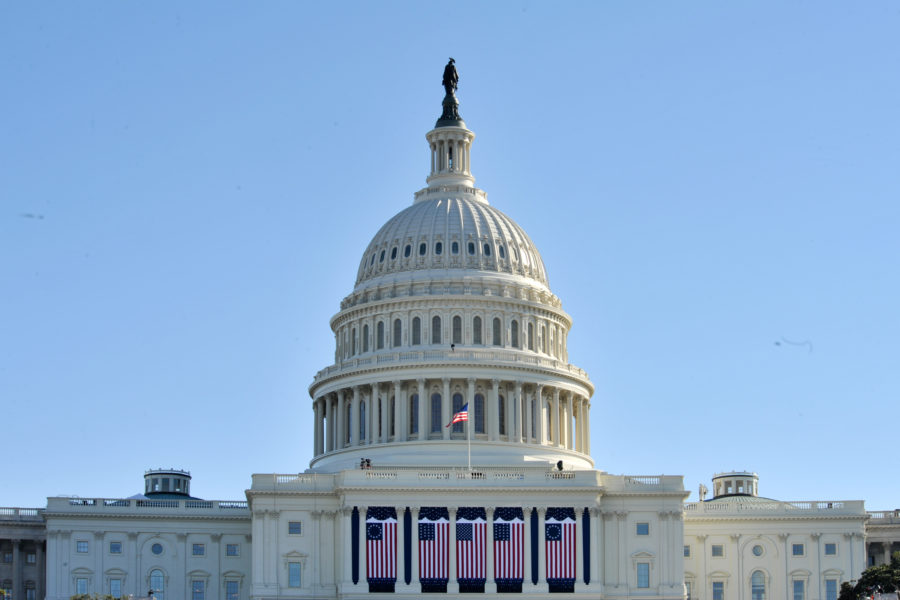The House of Representatives is poised to pass its version of the 2023 National Defense Authorization Act, but first it has to wade through hundreds of amendments and the hours of debate that will come with them.
The House Armed Services Committee considered roughly 800 amendments to the NDAA as part of its markup process in June. Another 1,200 were introduced as the bill passed through the House Rules Committee on July 12 and onto the floor for debate July 13.
“We don’t need 1,200 amendments, and past a certain point, it becomes more difficult to do this,” Rep. Adam Smith (D-Wash.), chair of the HASC, said during the Rules Committee hearing. “And I hope members will be more judicious in how they present this. At a certain point, you simply can’t process it. … There are going to be amendments that we’re not going to let in here simply because we don’t have time to go through them.”
To that end, the Rules Committee approved 650 amendments to go to the House floor for debate and votes. Among those 650 were several provisions aimed specifically at the Air Force and Space Force.
Divestments
The Air Force turned some heads with its request in the 2023 budget to retire 33 of its oldest F-22s, and both the House and Senate Armed Services Committees took action in their versions of the NDAA to block that move.
The Biden administration made its case to proceed with the divestments in a statement of administration policy from the White House Office of Management and Budget to the Rules Committee on July 12 , arguing that “requiring the Department to maintain a minimum inventory of major platforms limits the Secretary’s ability to optimize future force structure, increases the long-term cost of sustaining the force, and further delays necessary efforts to keep pace with the People’s Republic of China’s challenge in key warfighting areas.”
But none of the amendments being considered in the House would reverse HASC’s provisions that not only require the Air Force to keep the older F-22s, but to upgrade them.
Instead, an amendment by Rep. Cliff Bentz (R-Ore.) would limit the number of F-15s the Air Force can divest, at least until the service provides a report to Congress on the number of F-15s—including F-15Cs, Ds, Es, and EXs—it plans to buy and retire in the next five years, broken down by year and location, as well as an assessment of the negative impacts of such retirements and plans to replace those missions.
Bentz’s amendment also calls for the Air Force to explain its plans to procure fewer F-15EXs. Service leaders have adjusted their plans for the F-15 fleet recently, and that includes a smaller buy of F-15EXs to free up funds for other priorities.
Similarly, an amendment by Rep. Adam Kinzinger (R-Ill.) would prohibit the Air National Guard from retiring the RC-26 Condor, a tactical ISR platform the Guard has also used for counternarcotics, disaster response, and civil support missions.
Kinzinger’s amendment does allow the Secretary of the Air Force to retire individual RC-26s on a case-by-case basis if they are no longer mission capable, but it would force the Air National Guard to provide more funding for a platform that leaders say costs millions of dollars per year to keep going.
Those same leaders have said they can use other, cheaper technologies such as drones to perform the same missions the RC-26 handles, but Kinzinger’s amendment would require the Guard to maintain “a fleet of fixed wing, manned ISR/IAA aircraft.” The provision would also require an independent assessment of how the Air Force can modernize that fleet over the next decade.
Finally, Rep. Guy Reschenthaler (R-Penn.) proposed an amendment that would stop short of blocking the Air Force from retiring any KC-135s, but it would express the sense that the service shouldn’t do so without replacing them on a one-for-one basis with KC-46s.
All three amendments were included in en bloc packages for consideration on the House floor, meaning they are virtually guaranteed to be approved.
Space Force Cyber Squadrons
Another amendment included in a package addresses how the Space Force will fill its current and future cyber-focused squadrons. Specifically, the provision by Rep. Stephanie Murphy (D-Fla.) would require the Secretary of the Air Force and the Chief of Space Operations to review the staffing requirements for those squadrons.
“Specifically, the review shall consider the specific sourcing of existing billets of the Space Force that are optimal for transfer to cyber squadrons, and the administrative process required to shift such billets to cyber squadrons,” the amendment’s summary reads.
The Space Force currently has three cyber squadrons—the 61st Cyber Squadron, the 62nd CYS, and the 65th CYS—as part of Space Delta 6. According to media reports, four more will stand up in the near future.
Cancer Study
A recent study from the Air Force revealed that fighter pilots from 1970 to 2004 experienced higher rates of certain kinds of cancer, and advocates are pushing for more study on the issue, to include more services, aircrew, and other areas.
Rep. August Pfluger (R-Texas), a former Air Force pilot, is one such advocate, and he included an amendment that would direct the Secretary of Veterans Affairs to work with the National Academies of Sciences, Engineering, and Medicine to “study the incidence of and mortality of cancer among individuals who served in the Navy, Air Force, or Marine Corps as aviators and aircrew.”
Pfluger’s amendment would also cover maintainers, and it would require the study to look at “chemicals, compounds, agents, and other phenomena” that could potentially be linked to higher rates of cancer among the individuals studied. The results of the study would have to be reported to Congress by the end of 2025.
